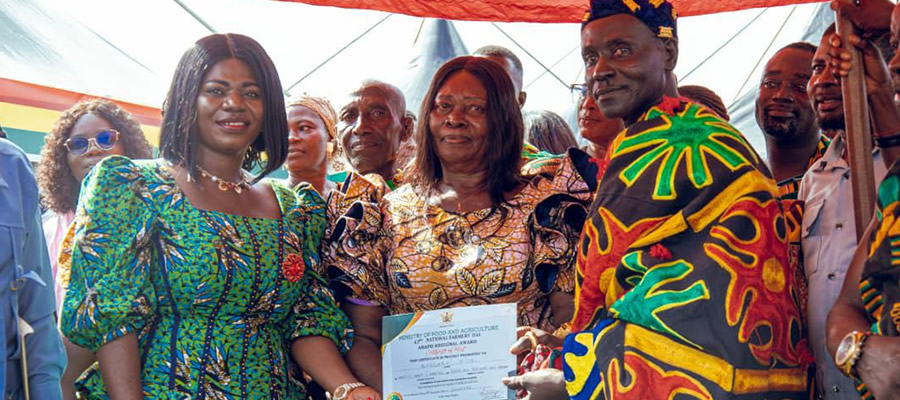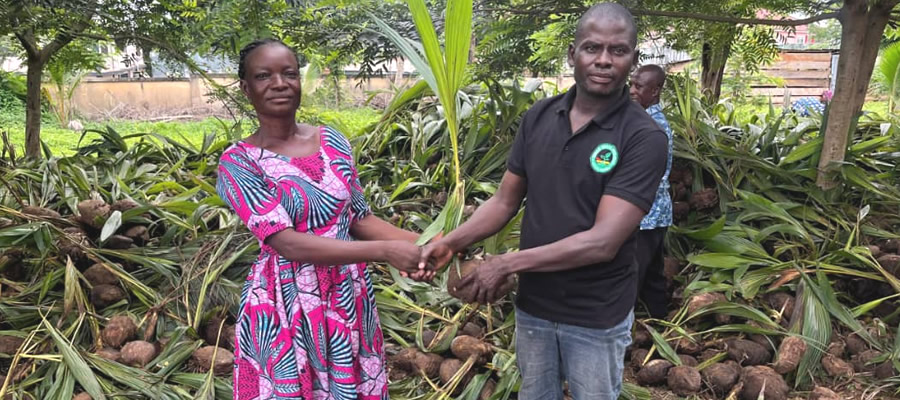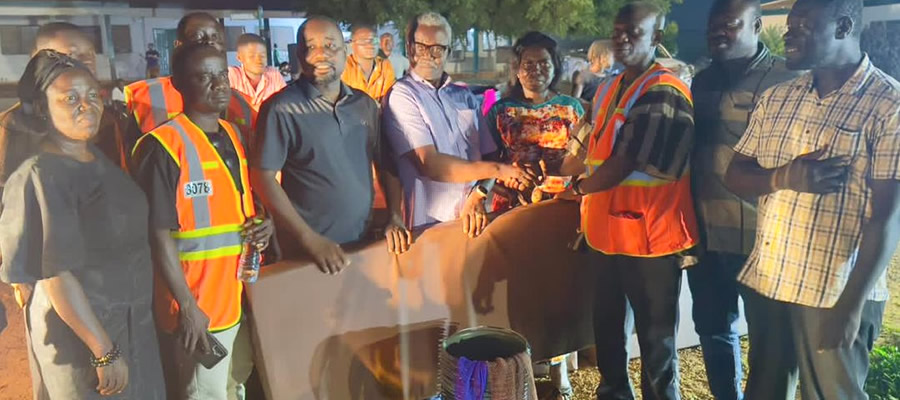

Location and Size
The Asutifi North District used to be part of old Asutifi District under LI 1485 of the erstwhile Provisional National Defence Council (PNDC) quest to deepen the decentralisation process in 1988. In June 2012, the Asutifi South District was created leaving the mother District to stand separately as Asutifi North District under LI 2093 with Kenyasi still the District capital. The District is now one of the six (6) Districts in Ahafo Region and Two Hundred and Sixty (261) in Ghana respectively.
The Asutifi North District is located between latitudes 6°40’ and 7°15’ North and Longitudes 2°15’ and 2°45’ West. It shares boundaries with Sunyani Municipal on the north, Tano North Municipal and Tano South Municipal on the north-east, Dormaa East District to north-west, Asutifi South District in the west, Asunafo North Municipal in the south-west and Ahafo Ano North Municipal (Ashanti Region) in the south-east. With a total land surface area of 936 sq.km, the District is one of the smallest in the Ahafo Region. There are a total of over 139 settlements in the District with major towns as Kenyasi No.1, Kenyasi No. 2, Ntotroso, Wamahinso, Gyedu and Gambia II. The District capital Kenyasi, is about 50km from Sunyani, the Regional capital of Bono.
Climate
The District lies within the wet semi-equatorial zone marked by double rainfall maxima; June and October with a mean annual rainfall between 125cm and 200cm.
The first rainy season is from April to July (maximum) and the second rainy season is from September to October (minimum) when the District comes under the influence of the wet maritime air mass. The beginning of the rainy season is marked by heavy thunderstorms which sometimes cause the ripping off of building roofs. There is a sharp dry season between the two rainy seasons, the main one coming between November and March when the tropical continental airmass in the country sweeps over the area. Relative humidity is generally high ranging between 75% to 80% during the two rainy seasons and 70% to 80% during the rest of the year.
The highest point of the physiographic of the District is about 700 feet above sea level. The lowest part is about 650 feet above sea level found along the river basins whilst the highest point is found within a chain of mountains in the north east reaching a height of 1400 feet above sea level. These mountains form water shed for the many tributaries of Tano River and other streams. There are out crops of gigantic rocks found over Birimian rocks basement standing about 750-900 feet above the broad surface.
Relief and Drainage
The District lies within the forest dissected plateau physiographic Region with average height of about 700 feet above sea level. The lowest part is about 650ft above sea level found along the river basins whilst the highest point is found within a chain of mountains in the north east reaching a height of 1400 feet above sea level. These mountains form water-shed for the many tributaries of the Tano River and other streams. There are out-crops of gigantic rocks found over Birimian rocks basement standing about 750 - 900 feet above the broad plateau surface.
The District is drained by Tano River and its many tributaries which include Nsubin, Goa and Ntotro rivers exhibiting a dentric pattern. These youthful fast flowing rivers have cut up the plateau surface giving rise to the dissected nature of the plateau.
The persistent clearing of the catchment areas of these rivers and streams for farming purposes has adversely affected their level of flow or volume. They have virtually become seasonal rivers. During the dry season too, some of the rivers lose the level of flow and streams dry up. Several communities also face acute water shortage, albeit the rivers serve as major sources of domestic water supply.
Rivers and streams take their source from these hilly areas. These rivers and streams ultimately serve as a source of drinking water to the various communities in the District. On the other hand, the relief and drainage influence climatic conditions in terms of rainfall patterns and farming activities.
Geology and Minerals
Within the Birimain and Dahomeyan formations with natural resources or potentials such as granites, clay, sand, gold, diamond deposits and the like. The Birimian formations are known to be the gold bearing rocks. The Birimian rocks also have a high potential for Manganese and Bauxite. Currently, gold is being mined in area where these rocks are found by Newmont Ghana Gold Limited, one of the biggest mining companies in the world. These areas include Kenyasi No.1&2, Ntotroso, Gyedu-Wamahinso and other smaller communities. However, other exploration activities are on-going in other communities within the District.
Studies have shown that Diamond abounds in large quantities at Wamahinso and exploration is yet to begin. There is also a widespread deposit of sand and clay in the District. The sand and clay deposits can be found at Kenyasi, Gambia No.2 and Gyedu.
There are rounded out-crops of granite found over the Birimian rocks at Kwadwo Addaekrom, Goa Asutifi, and other smaller communities which have high potential of iron and bauxite.
Date Created : 12/4/2017 7:19:21 AM











 facebook
facebook
 twitter
twitter
 Youtube
Youtube
 +233 593 831 280
+233 593 831 280 0800 430 430
0800 430 430 GPS: GE-231-4383
GPS: GE-231-4383 info@ghanadistricts.com
info@ghanadistricts.com Box GP1044, Accra, Ghana
Box GP1044, Accra, Ghana